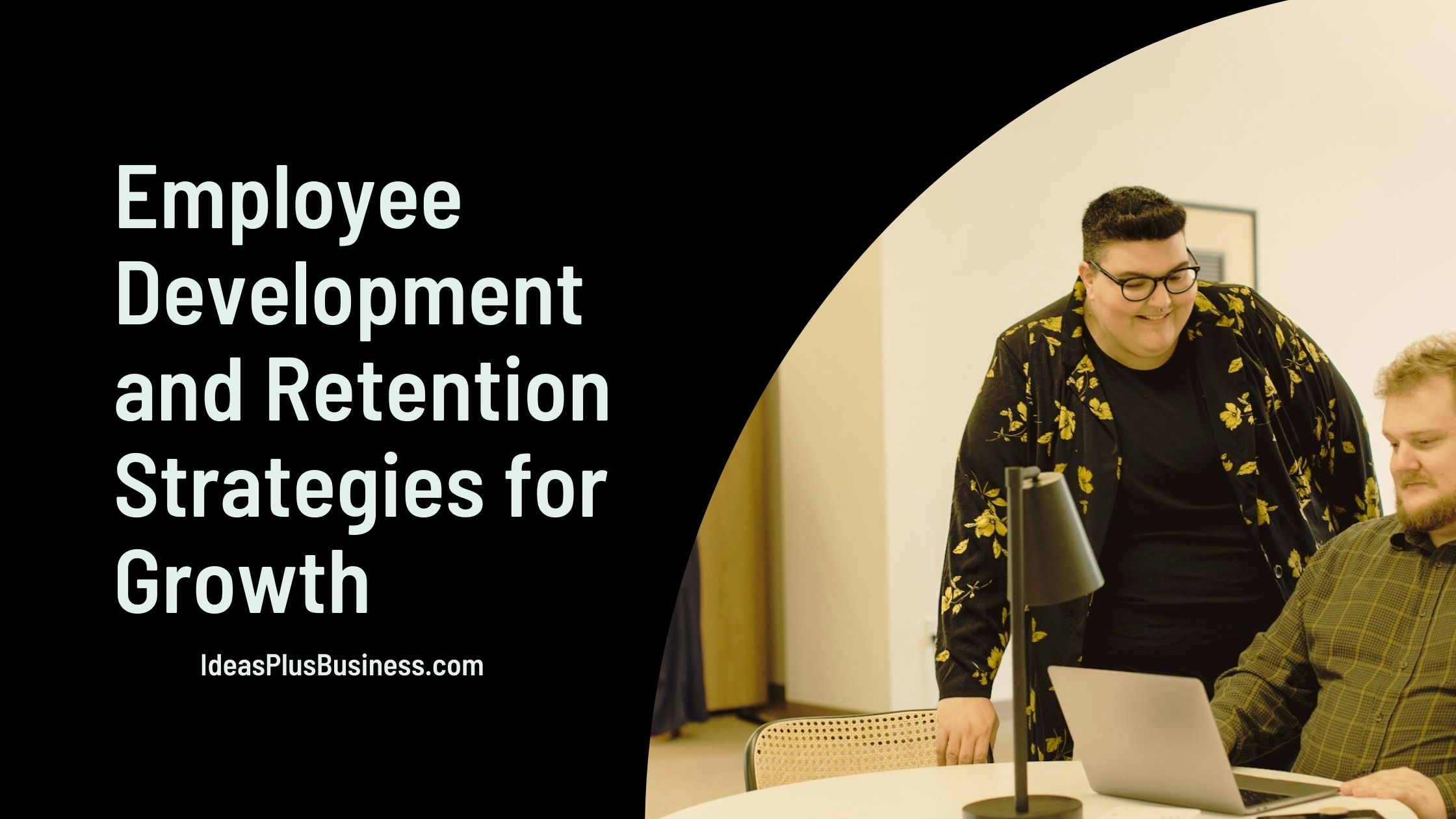Employee development and retention have become critical priorities for organizations seeking to attract and retain top talent in today’s competitive job market.
Fostering a culture of growth and learning not only benefits individual employees but also strengthens the overall success and resilience of the company.
In this blog post, we’ll explore the importance of investing in employee development and retention strategies, along with practical ways organizations can support their employees’ professional growth and career advancement.
What is employee development?
Employee development is all about empowering your workforce to grow their capabilities and become more effective contributors. It’s a two-way street where employees gain new skills and knowledge, and the organization benefits from a more skilled and engaged team.
Investing in employee development is a win-win. Employees feel valued and engaged, leading to increased productivity and satisfaction. For the organization, it translates to a stronger workforce, better problem-solving, and a competitive edge. It is like giving your engine a tune-up for a smoother ride.
Employee development can take many forms. Here are a few ideas:
- On-the-job training: Learning new skills directly through work experience.
- Workshops and seminars: Focused training sessions on specific topics.
- Online courses: Flexible learning options for a digital age.
- Mentorship programs: Pairing experienced employees with less experienced ones.
- Tuition reimbursement: Supporting employees who pursue further education.
By prioritizing employee development, you are creating a growth mindset within your organization. It is an investment in your people, and ultimately, an investment in your company’s success.

Why is employee development important?
Employee development is more than just a perk; it is a strategic investment in the future of the organization.
By providing opportunities for skill-building, training, and career advancement, companies can empower their employees to reach their full potential and contribute meaningfully to the company’s success. Investing in employee development fosters a culture of continuous learning and innovation, which is essential for staying competitive in today’s rapidly evolving business landscape.
Employee development isn’t a one-time event; it is a continuous journey. By creating a culture that embraces learning and provides ongoing opportunities for growth, you invest in your employees and, ultimately, the long-term success of your organization.
Creating a Culture of Growth
A culture of growth begins with leadership commitment in every aspect of the organization. Companies that prioritize employee development demonstrate their commitment to their employees’ success and well-being, fostering a sense of loyalty and engagement.
A culture of growth encourages open communication, collaboration, and feedback, creating a supportive environment where employees feel valued, challenged, and motivated to grow professionally.
How are employee development practices strategic?
Employee development practices are strategic because they focus on the long-term health and success of both the individual and the organization. Here’s how they create a win-win situation:
1. Alignment with Business Goals
Effective employee development programs aren’t random skill-building exercises. They are strategically designed to bridge the gap between individual growth and company objectives.
By identifying key skills needed to achieve business goals, you can tailor development programs to cultivate that specific expertise. This ensures your workforce is equipped to drive the company forward.
2. Building a Future-Proof Talent Pipeline
Imagine nurturing your crop of high-performing employees. Strategic development practices identify high-potential individuals and invest in their growth. This creates a pipeline of talent ready to fill future leadership roles or take on more complex responsibilities.
You reduce reliance on external recruitment, saving costs and ensuring a smooth transition for the organization.
3. Enhancing Innovation and Problem-Solving
A well-developed workforce isn’t just about technical skills. Strategic development fosters critical thinking, communication, and collaboration. This creates a dynamic environment where diverse perspectives can come together.
This “cross-pollination” of ideas sparks innovation, leading to better problem-solving and the creation of fresh solutions that give your organization a competitive edge.
4. Boosting Employee Engagement and Retention
Investing in employee development shows your people you value them. This fosters a sense of loyalty and purpose, leading to higher engagement and motivation. Engaged employees are more likely to go the extra mile and deliver exceptional results.
By offering growth opportunities, you create a compelling reason for top talent to stay. This reduces costly turnover and keeps your most valuable asset – your skilled workforce – happy and productive.
5. Building a Culture of Continuous Improvement
Strategic development practices go beyond just training programs. They create a learning culture where continuous improvement is valued.
This encourages employees to take ownership of their development, seek out new challenges, and readily adapt to change. This adaptability ensures your organization can stay agile and competitive in the ever-evolving business landscape.

Practical Strategies for Employee Development
Here are some practical strategies for employee development:
1. Structured Training Programs
Implementing structured training programs, workshops, and seminars enables employees to acquire new skills, expand their knowledge base, and stay updated on industry trends.
These programs can be tailored to individual roles and career goals, providing targeted support for professional development.
2. Mentorship and Coaching
Pairing employees with experienced mentors or coaches fosters individualized support and guidance, helping employees navigate challenges, set goals, and develop new competencies.
Mentorship programs promote knowledge sharing, skill transfer, and personal growth, enhancing employee engagement and retention.
3. Career Pathing and Advancement Opportunities
Providing clear pathways for career advancement and growth demonstrates a commitment to employee development and retention.
Companies can offer internal mobility programs, succession planning initiatives, and promotion pathways to encourage employees to envision long-term career trajectories within the organization.
4. Feedback and Performance Reviews
Regular feedback and performance reviews are essential for identifying areas of strength and improvement, setting goals, and tracking progress.
Constructive feedback fosters a culture of continuous improvement and accountability, empowering employees to take ownership of their development and performance.

Measuring Success and Impact of Employee Development
Effective employee development and retention strategies should be accompanied by mechanisms for measuring success and impact.
Key performance indicators (KPIs), such as employee engagement scores, retention rates, and skill acquisition metrics, provide valuable insights into the effectiveness of these initiatives. By tracking progress and gathering feedback from employees, organizations can refine their strategies and ensure they are making meaningful investments in employee growth and development.
Investing in employee development and retention is not only a smart business strategy but also a moral imperative. By prioritizing the growth and well-being of their employees, companies can create a culture of trust, loyalty, and high performance.
Fostering a supportive environment where employees feel valued, challenged, and empowered to grow contributes to long-term organizational success and sustainability. As companies continue to navigate the challenges of a rapidly changing business landscape, cultivating a culture of growth and learning will be essential for attracting, retaining, and developing top talent.

I am Adeyemi Adetilewa, the Editor of IdeasPlusBusiness.com. I help brands share unique and impactful stories through the use of online marketing. My work has been featured in the Huffington Post, Thrive Global, Addicted2Success, Hackernoon, The Good Men Project, and other publications.


